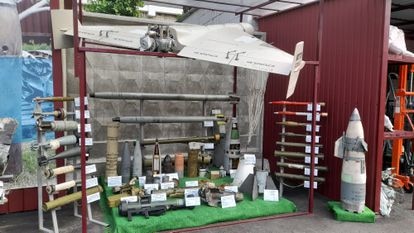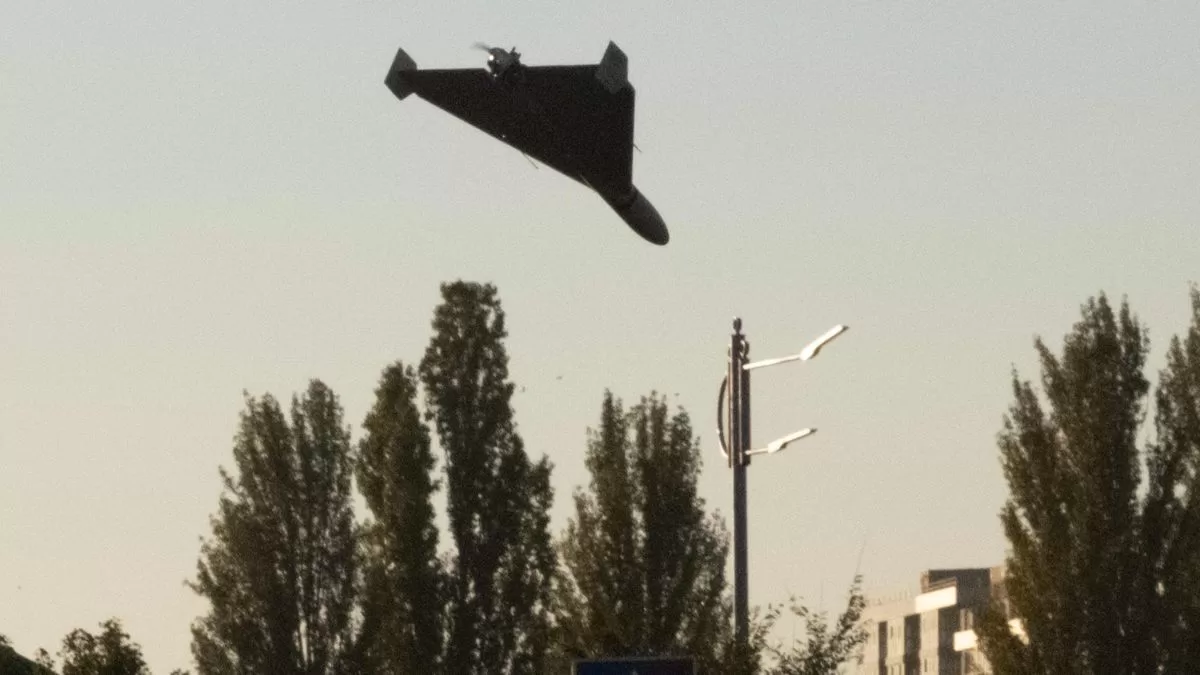As Oleksi Kuzmenko, 52, explains how to investigate a crime scene perpetrated by a Russian projectile, a fellow lab veteran interrupts with a piece in his right hand. He wants to show that what he has and that a moment ago was fussing with his tools, the size of a tennis ball, is the carburetor of a Shahed model drone. This unmanned device is manufactured in Iran, but that piece, in particular, is of Japanese origin. “We found this out a few weeks ago,” says Kuzmenko. It is one of the latest findings that shows that the weapons that Russia uses to punish Ukrainian citizens -cruise missiles, hypersonic missiles, drones, shuttles, tanks, helicopters…- have components manufactured in Western countries. This is due, above all, to two things: a convoluted labyrinth of intermediaries that makes it possible to circumvent the sanctions approved in Washington and Brussels against this business, and a deficient system of export control by Kiev’s allies.
Japan is just one example, albeit a notable one, because there are already around 2,000 Shahed drones launched by Moscow against Ukrainian territory, generally civilian, since the start of the invasion. A recent report by the Kyiv School of Economics (KSE) think tank, in collaboration with the Yermak-McFaul Group (Russia’s military capability and the role of imported components) states: from a sample of 58 weapons, 67% of the foreign components found had been produced by American companies, 7% by Japanese, and the same by German companies. This does not necessarily mean, as the KSE defends, that the manufacturer knows what the final use of his material is. From origin to destination, dozens of intermediaries may have been used until assembly in Russia.
Kuzmenko works at the kyiv Forensic Scientific Research Institute. Just a few minutes after a Kinzhal (hypersonic) missile was intercepted in the sky over the Ukrainian capital by the Patriot anti-aircraft defense systems, the chief technician of the laboratories shows the head of one of these projectiles, recently collected, located on an artificial turf as part of a showcase of horrors: a nearly intact Shahed, which missed its target and fell; the remains of a cruise shell; a Tochka-U like the one that blew up the Kramatorsk train station; the remains of a missile with cluster munitions, and even decoys to confuse anti-aircraft defenses.
“This comes from Italy, this is Chinese, this is American, this microchip has been produced in Switzerland…”, lists the forensic expert with the controller of an Iranian drone in his hand, on one of the tables in the laboratory where the rescued items are cut up. at the impact site. “It’s easy to buy these components anywhere and assemble them in Russia,” he says. What this institute does is send a team to the crime scene after an attack; they collect the evidence, take it to the laboratory, analyze it, look at the license plates, compare it with other samples, label it and send it to the police, and the latter to the courts.
China as an intermediary
Join EL PAÍS to follow all the news and read without limits.
subscribe
Kuzmenko now shows a Kalibr cruise missile, one of those that Russia launches from the Black Sea Fleet. “All the electronics on this one are Western,” he says. These Kalibr are also part of the sample of Russian military equipment analyzed by the KSE, along with other missiles such as the KH-59, the Iskander and the KH-101. According to the study carried out by this institute, the vast majority of components manufactured in the West found are microchips. The electronic parts (semiconductors, microprocessors, microtransistors) of these weapons are those that generally originate in countries west of the Carpathians. Russia does not have the capacity to produce them. “We have to distinguish two things,” says Olena Bilousova, 30, one of the authors of the KSE report, “first there is the country where the manufacturing company is based, which can be the United States, and then the final producer, which it may be in China, Malaysia or the Philippines. The product does not have to enter the US and is not under its export control.
The KSE has followed the commercial trail of parts of these 58 Russian military pieces of equipment. In this analysis it has found 1,057 components produced by 155 companies based in 19 countries. The US takes the cake here, followed by the aforementioned Japan and Germany, followed by Switzerland, Taiwan, the Netherlands and China. The Asian giant, however, stands out as an intermediary country, along with Hong Kong and Turkey, from where these components end up traveling to the Russian trading partner.
But the casuistry is as varied as the international trade routes. This KSE report points out that they have also found many electronic components in ballistic or cruise missiles that, in the first instance, had the mission of feeding the Russian space program (Roscosmos), that is, fulfilling a non-military use. “Roscosmos,” this report states, “has been used by Russia as a means to acquire technologies with both civil and military applications.” Bilousova bets on being more accurate in the application of sanctions and quicker in the control of trade: “We have to be able to cut off the new routes to stop this monster,” she affirms, “to force Russia to think of new ways to obtain these components, so that it costs more and has less money for the war”.

The government of Volodímir Zelenski does not stop working on this, in regular conversations with those in charge of applying sanctions from the allied countries. Vladislav Vlasiuk, 34, is the adviser on this matter to the head of the Presidential Office, Andri Yermak. Vlasiuk acknowledges, in a not very optimistic tone, that Russia still has resources and materials to nourish its arsenals. He recalls this lawyer born in the Vinitsia region, that the European Union has had the ability since June to punish those countries that help Moscow bypass sanctions, as would be the case with intermediaries that sell Western components. But things are slow. “Maybe,” he muses with a smile, “we should go public with those companies that make these parts.”
Vlasiuk rescues from an internal report a photograph of a microchip used by a Russian cruise missile and manufactured by a well-known American company. Also a collaborator of the Yermak-McFaul Group, which works on the imposition of sanctions by the West, Vlasiuk has seen almost everyone to convince them that more pressure must be applied. A few weeks ago he met with the Chinese mediator, Li Hui, who denied that Beijing sold any parts to the large Russian arms factory. If private Chinese companies did it, that was another matter, said the diplomat sent by Xi Jinping. “Despite everything,” concludes the adviser, “without thinking about how everything would be in a world without sanctions, we came to the conclusion that they are effective.”
We return to the forensic institute with an anecdote told by Kuzmenko: “At first, the Russians sent the Iranian Shahed with a phrase in Russian that said ‘do not touch’; They were trying to fool the world. Now, warns this forensic technician, the unmanned devices of this model arrive with Russian license plates, indicative that they may come from the new drone factory built by Moscow in the Republic of Tatarstan.
Follow all the international information on Facebook and Twitteror in our weekly newsletter.
Subscribe to continue reading
Read without limits





